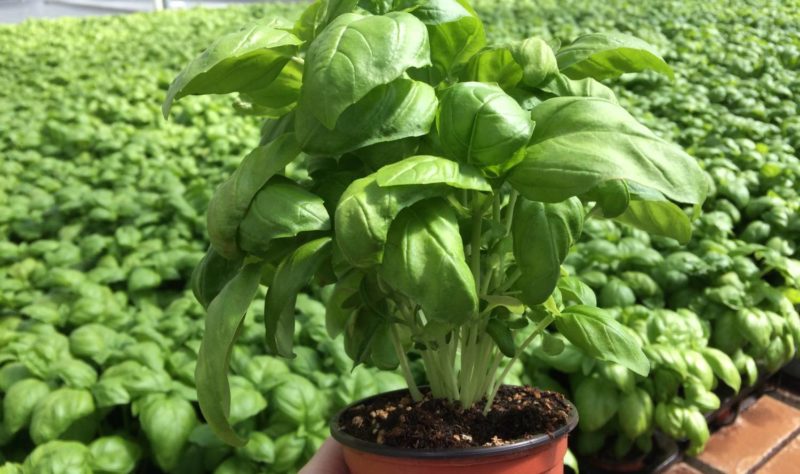
The Buzz of Secondary Metabolites
The diversity of crops grown in greenhouses and indoor vertical farms continues to expand. One broad segment that is increasing dramatically is the production of consumable crops. This includes a broad range of vegetables, fruits, culinary herbs and medicinals. While these crops are still predominantly grown in fields, yield and quality can be greatly increased when grown in controlled environments (although often with higher costs, too). Crop quality can refer to a lot of different plant parameters, but one of the more important ones for ingested crops is the concentrations of secondary metabolites.
Secondary metabolites are compounds that plants produce that are not directly involved in growth and development. These compounds are sometimes referred to as natural products, specialized metabolites, or secondary products, and vary widely from one crop to another. In contrast, primary metabolites are compounds that plants directly use during their life cycle, for example carbohydrates and proteins, and are common from one species to another.
There are hundreds of thousands of secondary metabolites. Their concentrations influence leaf and flower color (e.g., anthocyanins and carotenoids), nutrition (e.g., vitamins A and E), taste (e.g., glucosinolates and essential oils), and smell (volatile organic compounds).
Some secondary metabolites have medicinal properties [e.g., codeine and cannabidiol (CBD)], whereas others can be toxic. Some of these toxic compounds are used to control weeds, insects and pathogens. Regardless of their use, secondary metabolites can be modified through breeding activities as well as by plant culture and the environment.
Different forms of plant stress generally increase the concentrations of secondary metabolites. Some stressors include a high light intensity (especially UV and blue light), low temperature, poor nutrition, insect feeding and pathogen infection. The increase in some of these metabolites serve to protect plant tissue, and can be accompanied by increases in the nutritional or medicinal quality as well as flavor intensity.
In the commercial production of some specialty crops, the environment is sometimes manipulated to increase the concentrations of secondary metabolites. For example, delivery of UV, blue, and/or a high light intensity, particularly at the end of production, can increase leaf color, nutritional value, and the intensity of taste and smell of leafy greens and herbs. Growth regulators and biostimulants can also regulate secondary metabolites, including disease resistance and plant flavor, but responses are variable from one species and variety to another.
The term “plant resilience” is sometimes used to describe an increased tolerance to stressful conditions. For example, plants generally perform better during shipping and in the retail environment when they have been “hardened off,” such as exposure to more light, lower temperatures, or both. One of the reasons for this improved performance is the increased biosynthesis of secondary metabolites that protect plants from stressors.
While many secondary metabolites have a high value, in some cases there can be too much of a good thing. For example, the taste of some culinary herbs (such as basil) and leafy greens (such as kale) can become undesirably strong when grown under very high light levels. In addition, the sudden introduction of stress can inhibit growth, damage plant tissue, or both. Therefore, a managed and deliberate stress, especially toward the end of a production cycle, can yield the best results from growth and plant quality perspectives.
However, whether growing flowers, foliage, or food, quality and value usually increase with their concentrations of secondary metabolites. That is why there’s an increasing buzz about secondary metabolites as our understanding of their value — and ways to regulate their concentrations — increase.


 Video Library
Video Library 




















